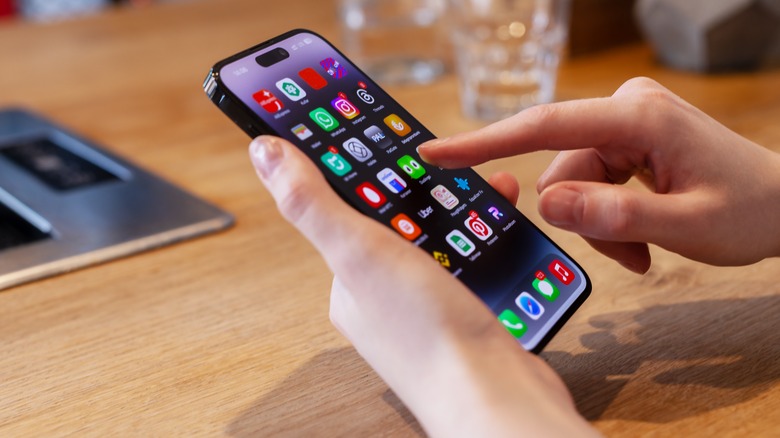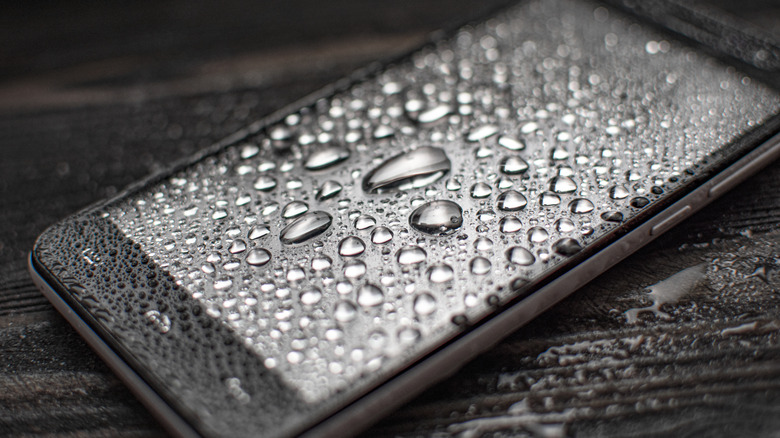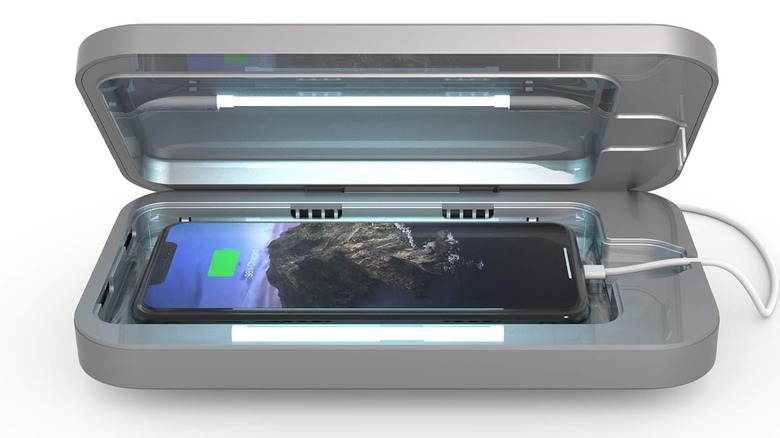Why There's Only One Good Way To Clean Smartphone Screens
We may receive a commission on purchases made from links.
We take our smartphones everywhere. Not only are they robust communications devices capable of many flavors of voice, video, and text chats that keep us connected to the rest of the world, but as pocket computers, they're a whole lot more, too. They're our portable music players that we listen to on the subway. They're our digital photo frames. They can even be a handy way to read books in a pinch, and for some they might even be part of their bathroom reading routine. All of this is to say that everywhere should be taken as literally as possible, and that as a result, our smartphones are basically petri dishes full of germs and all sorts of other bacteria.
"Chances are you're not regularly getting sick from germs on your phone, but viral diseases like influenza and bacterial diseases like E.coli can spread through contact with a phone carrying viruses and bacteria," explained Sarah Latoria, a primary care clinician at Northwestern Medicine. Clearly, your phone needs to be cleaned, but doing so is easier said than done. It's one thing to take a sanitizing wipe to your case or the shell of your phone, but the Gorilla Glass touchscreen is a different matter, as it can be damaged by some cleaners.
Let's take a look at why this is, as well as the one reliable option that's out there for disinfecting the entire surface of your smartphone.
The problem lies in the coating on the touchscreen
The complicating factor in cleaning the front of your smartphone is that the display glass is covered in an oleophobic coating to keep fingerprints and smudges at bay while also helping to provide the tactile sensation we've all become accustomed to. These coatings are prone to breaking down over time, and common surface disinfectants like isopropyl alcohol have a tendency to eat into the coating faster than it would break down on its own. The same applies to glass screen protectors, as well.
"While it is safe to use disinfectant wipes on many devices, keep in mind that those containing alcohol, bleach or vinegar may wear down the protective coating on a smartphone's screen," reads the FCC's official guide to sanitizing your phone and other electronic devices. The same guide further implores smartphone owners to "Avoid aerosol sprays and cleaning solutions that contain bleach or abrasives." No definition of "abrasives" is given, though.
Technically speaking, Apple and Samsung both have official guidance on their websites for using 70% or better isopropyl alcohol on your smartphone's screen, but Popular Mechanics seems skeptical of the utility of this advice, and there's a good reason for that. "Do not apply these liquid solutions directly to your device; they should be carefully applied to a microfiber cloth instead," reads Samsung's, which doesn't inspire much confidence. Apple, meanwhile, adds that "rubbing the screen with an abrasive material" could damage it, again without defining "abrasive."
Enter UV disinfecting lights
Whatever degree to which the jury's out on if using disinfectant wipes or disinfectants in general on your smartphone's display, the same can't be said for the one proven way of cleaning it that we can be sure won't damage your phone. That's using UV-C light-based solutions, which blast the phone with disinfecting lights in a closed box — the most popular and well-known is probably the Phone Soap brand — for several minutes until it's ready to go. UV-C light can damage your eyes, which is why this needs to happen in an enclosed box, but the process has 120-plus years of history of being used for disinfectant purposes and is routinely used in medical settings.
PhoneSoap sells a flagship model called the PhoneSoap 3, which retails for $79.95, plus a version with built-in wireless charging called the PhoneSoap Wireless for $99.95, and the larger PhoneSoap Pro for a $119.95. Business Insider gave it a very positive review in March 2020, right as COVID-19 lockdowns were starting in the United States, "At $80, it's generally just an excellent investment for anyone," read the writeup. "PhoneSoap is large enough to fit all phones on the market, even with a case. Additionally, you can throw in anything else that will fit — earphones, watches, even wallets."
Competitors litter Amazon, albeit with few from name brands; the exception is the Homedics UV Clean, which the site has long sold for close-out prices under $20 despite the fact that the device retails on the Homedics website for $74.99.


